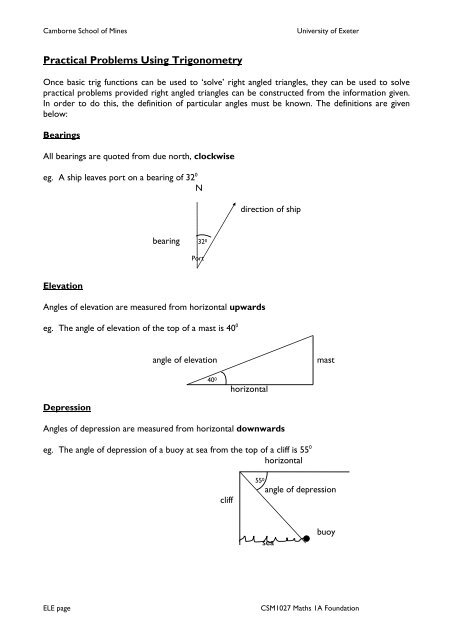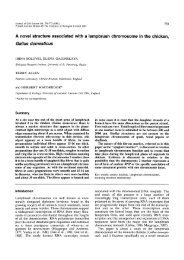Introduction to Trigonometry - University of Exeter
Introduction to Trigonometry - University of Exeter
Introduction to Trigonometry - University of Exeter
You also want an ePaper? Increase the reach of your titles
YUMPU automatically turns print PDFs into web optimized ePapers that Google loves.
Camborne School <strong>of</strong> Mines<strong>University</strong> <strong>of</strong> <strong>Exeter</strong>Practical Problems Using <strong>Trigonometry</strong>Once basic trig functions can be used <strong>to</strong> ‘solve’ right angled triangles, they can be used <strong>to</strong> solvepractical problems provided right angled triangles can be constructed from the information given.In order <strong>to</strong> do this, the definition <strong>of</strong> particular angles must be known. The definitions are givenbelow:BearingsAll bearings are quoted from due north, clockwiseeg. A ship leaves port on a bearing <strong>of</strong> 32 0 Ndirection <strong>of</strong> shipbearing 32 0PortElevationAngles <strong>of</strong> elevation are measured from horizontal upwardseg. The angle <strong>of</strong> elevation <strong>of</strong> the <strong>to</strong>p <strong>of</strong> a mast is 40 0angle <strong>of</strong> elevationmast40 0horizontalDepressionAngles <strong>of</strong> depression are measured from horizontal downwardseg. The angle <strong>of</strong> depression <strong>of</strong> a buoy at sea from the <strong>to</strong>p <strong>of</strong> a cliff is 55 0horizontalcliff55 0 angle <strong>of</strong> depressionseabuoyELE pageCSM1027 Maths 1A Foundation
















